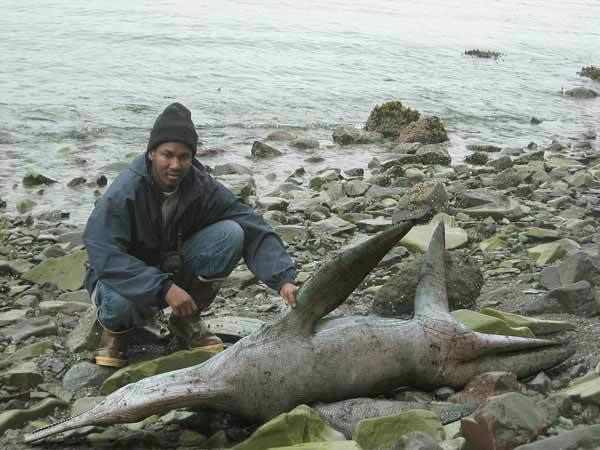 | ||
Top 10 prehistoric marine reptiles
Marine reptiles are reptiles which have become secondarily adapted for an aquatic or semi-aquatic life in a marine environment.
Contents
- Top 10 prehistoric marine reptiles
- Top 7 biggest marine reptiles
- Extant varieties
- Conservation
- References
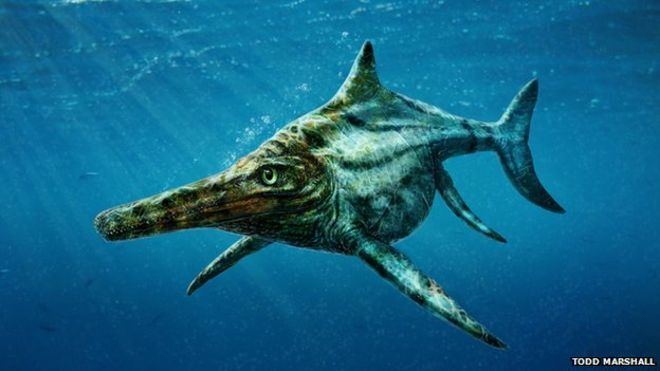
The earliest marine reptiles arose in the Permian period during the Paleozoic era. During the Mesozoic era, many groups of reptiles became adapted to life in the seas, including such familiar clades as the ichthyosaurs, plesiosaurs (these two orders were once thought united in the group "Enaliosauria," a classification now cladistically obsolete), mosasaurs, nothosaurs, placodonts, sea turtles, thalattosaurs and thalattosuchians. After the mass extinction at the end of the Cretaceous period, marine reptiles were less numerous, but there was still a high variety of species in the early Cenozoic, such as "true" sea turtles, bothremydids, palaeophiid snakes, a few choristoderes such as Simoedosaurus and dyrosaurid crocodylomorphs. Various types of marine gavialid crocodilians remained widespread as recently as the Late Miocene.
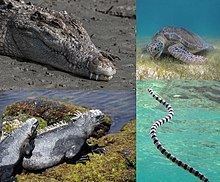
Currently, of the approximately 12,000 extant reptile species and sub-species, only about 100 of are classed as marine reptiles: extant marine reptiles include marine iguanas, sea snakes, sea turtles and saltwater crocodiles. The Murua gharial was yet another example of a fully marine reptile, that became extinct rather recently.
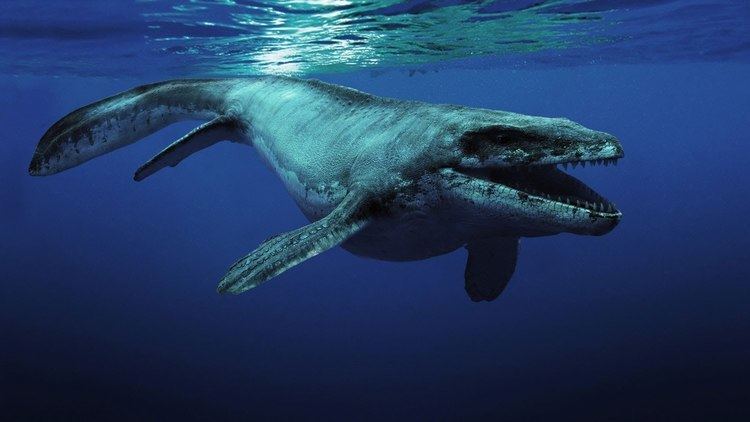
Some marine reptiles, such as ichthyosaurs, plesiosaurs, metriorhynchid thalattosuchians, and mosasaurs became so well adapted to a marine lifestyle that they were incapable of venturing onto land and gave birth in the water. Others, such as sea turtles and saltwater crocodiles, return to shore to lay their eggs. Some marine reptiles also occasionally rest and bask on land.
Top 7 biggest marine reptiles
Extant varieties
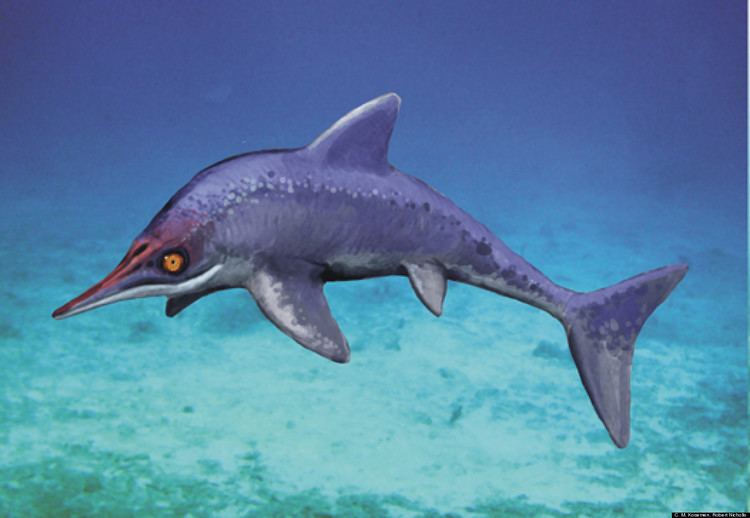
Conservation
Most species of marine reptiles are considered endangered to some degree. All but one species of sea turtles are endangered due to destruction of nesting habitats on coastal lands, exploitation, and marine fishing; many species of sea snakes are threatened or endangered due to commercial exploitation (sale of skins) and pollution especially in Asia; marine iguanas are threatened due to their very limited habitation range. Saltwater crocodiles are at low risk for extinction.
